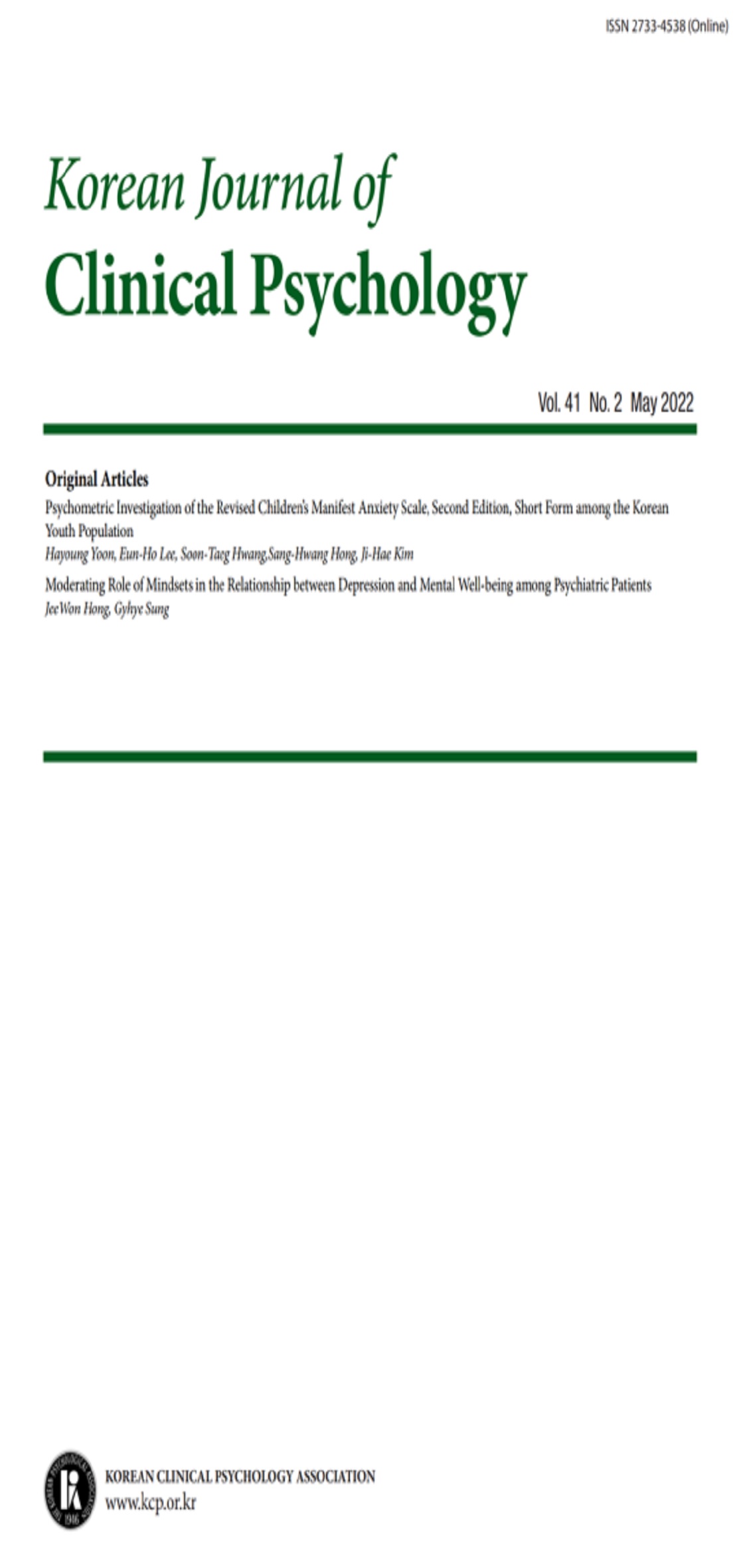open access
메뉴
open access
메뉴 E-ISSN : 2733-4538
E-ISSN : 2733-4538
본 연구는 전산화 신경심리평가 도구인 STIM의 유용성과 타당성, 제한점을 검증하기 위하여, 외상성 뇌손상 환자 중 뇌영상 검사상 병변이 확인된 병변군 30명과 병변이 확인되지 않은 비병변군 32명, 정상대조군 30명을 대상으로 STIM의 소검사 중 수지력검사, 시각지속수행검사, 공간기억검사, 주의전환검사, 범주화검사, 카드분류검사와 지능검사(KWIS)를 실시하였다. 연구결과, 병변군과 비병병군은 정상군에 비해 전체지능이 유의하게 낮았으며, STIM검사 결과에서도 병변군은 미세운동협응력, 정신운동속도, 지속적, 선택적 주의집중력, 단기기억력, 고차적 인지기능이, 비병변군은 미세운동협응력, 정신운동속도, 고차적 인지기능이 정상군에 비해 저조한 것으로 나타났다. STIM의 소검사와 KWIS의 소검사 간의 교차 타당도 분석결과, 6개의 소검사 각각 미세운동협응력, 지속적 주의집중력, 시공간적 단기기억력, 선택적 주의집중력, 비언어적 추론능력과 관련되는 KWIS 소검사들과 유의한 상관을 보였다. 전체지능, 연령, 교육연한 등의 가외변인들과 STIM 소검사 수행과의 상관분석 결과에서는 세 변인 모두가 시각지속수행검사, 공간기억검사, 범주화검사, 카드분류검사와 유의한 상관을 보였으며, 수지력검사와 주의전환검사에서는 상관이 낮았다. 본 연구 결과, 전산화 신경심리검사인 STIM이 검사도구 상의 문제와 한글로 제시되는 언어성 소검사가 부족하다는 제한점을 가지고 있지만, 외상성 뇌손상 환자들의 인지기능 상의 장애영역을 평가하는데 비교적 유용한 검사임이 입증되었다. 마지막으로 본 연구의 제한점과 후속 연구에 대한 시사점이 논의되었다.
This study was designed to identify the usefulness, validity and limitations of computerized neuropsychological test, STIM. Subjects were 30 traumatic brain-injury patients with CNS leisons in brain-imaging test findings - MRI or CT - and 32 patients without CNS leisons, and 30 normal control group. Among the subtests of STIM, finger-tapping test, visual continuous test, spatial memory test, attention switching test, categories test, and Wisconsin card-sorting test and KWIS were performed by all subjects. Total I.Q. of leisoned patients group and non-lesioned patients group were lower than normal control group. In the result of 6 subtests of STIM, fine motor coordination, psychomotor speed, continuous and selective attention, short-term memory, and high cognitive functioning of lesioned patients group and fine motor coordination, psychomotor speed, and high cognitive functioning of non-lesioned patients group were significantly lower than normal control group. In the cross validity analysis with the subtests of STIM and the subtests of KWIS, each subtest showned hign correlation with the cognitive functioning that was theoretically supposed to be assessed by the test. In correlation analysis of the extra variables, total I.Q., age, and education with the subtests of STIM, these three extra variables had significant correlations with visual continuous test, spatial memory test, categories test, and WSCT, but did not have significant correlations with finger-tapping test and attention switching test. Although there were some limitations of the problems of tools and lack of Verbal subtest for Korean version, this computerized neuropsychological test battery was proven to be very useful in assessment of the impaired cognitive funtioning domain of traumatic brain-injury patients.
